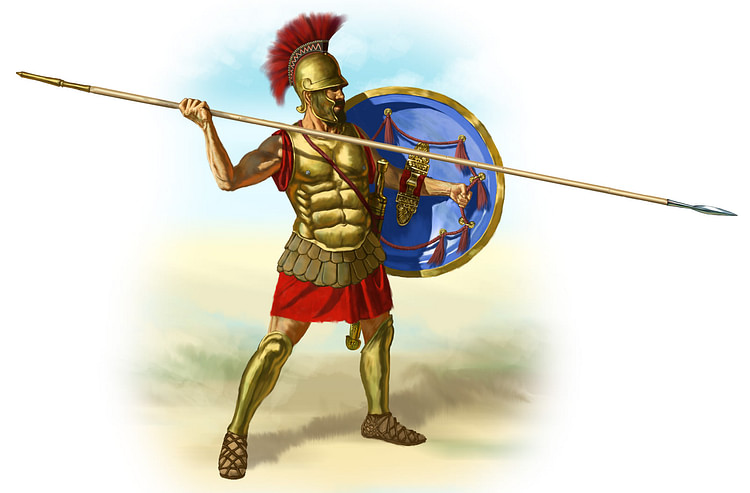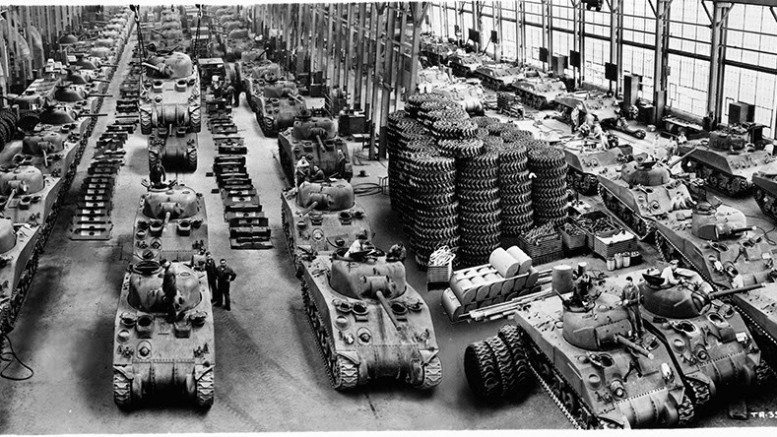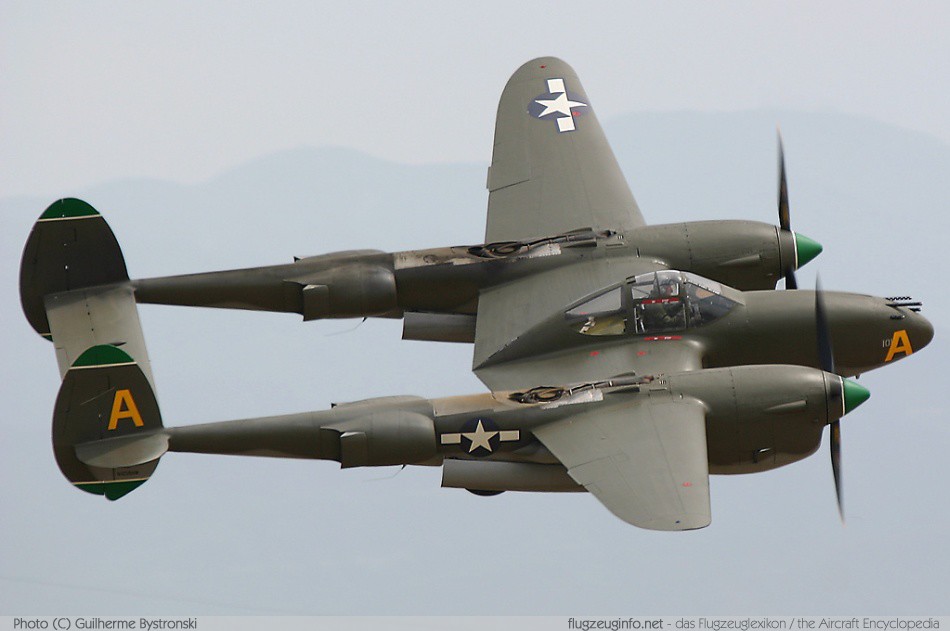"She may not look like much, but she's got it where it counts."
Ah, the North American P-51 Mustang. The poster child of World War 2 fighter aviation (deservedly). The favorite of armchair aces nationwide. But why?
(Hard to say no to a red-tail.)
To be honest, a more than decent chunk of the Mustang's popularity is thanks to the car. Ford wisely chose to name their sporty teenage dream car after the "cool plane dad flew during the War." Because of that, the name is one everyone recognizes, whether they are a history buff or not.
The Mustang is one of the few aircraft from WW2 that the average person knows (along with B-17, Spitfire, and Zero). And this is for good reason. The Mustang flew in Europe (bigger civilian population), where its primary role was escorting bombers and providing close air support for troops (lots of guys seeing them in action). And with the polished bare metal they wore in the last years of the war, the P-51 was the knight in shining armor, doing battle against evil. A slick, curvy sportster with flashing paint.
But this classic wasn't an instant success. And if you know anything about me, its that I like to wander through the history and details of something.
The powerhouse that became the P-51D Mustang began life as a request from the British for the North American Aviation company of Inglewood, CA, to build P-40 Hawks.
The date was 1940. Britain was desperate for military equipment. Thousands of small arms were abandoned in the escape at Dunkirk. Hundreds of aircraft were destroyed in the Battle of Britain. Uncountable tons of shipping were lost to the U-Boats. The British were hurting for everything from rifles to boots and tanks to morphine.
And the United States had the industrial muscle to provide.
(Looks like we're gonna have a bumper crop of Shermans this year.)
So the British Purchasing Commission went about looking for equipment. Aircraft specifically, of all types. While the US had bomber, patrol, and cargo aircraft that met or exceeded needs, America's available fighter choices were not quite up to par. The P-38 Lightning was too complex with its turbochargers. The P-39 did not have the reliability of engine, main gun, or flight characteristics. (At least, not in the style of fight used in Europe. She did well to exceptional in other theaters.) The only remaining choice to replace the lost Spitfires and Hurricanes wast the P-40. And she wasn't good enough. But she could be built fast.
Now, the P-40 isn't a bad plane, even when compared with the Bf 109 and Spitfire. In 1940 she was just a hair faster a low level, and could turn better than the 109 at most altitudes. Her armament was on average better than theirs, with the new P-40E having six machine guns. The B/C model wasn't half bad, either, though didn't quite have the punch or acceleration. And the upcoming F model would have a Rolls-Royce, putting her more on par with the European types. The problem was two-fold.
One, its gonna take a while to get enough RR Merlin engines, since the factories in England were at capacity and all the engines were needed already, and the Packard factory in the US would take time to get up to speed making them.
The P-40 had a good engine already, the Allison V-1710. The problem is the Allison isn't as good above 20,000 feet compared to the Merlin or the German DB 601.
And fighting over Europe tended to take place above 20,000 feet.
The second problem was Curtiss. Their factories were already at capacity building P-40s (for the US), C-46 Commandos, and a handful of Navy scout and bomber types. They were running full tilt just to fill the orders from the US, British, French, and Russians already. Taking on more wasn't physically possible.
The solution was simple: the British wanted North American Aviation (NAA) to build P-40s under license. They needed planes, any planes, and the P-40 was competent. It could be used to free up Spitfires for the higher up work, and its range and ruggedness meant it could do attack work. And they were more at home in the far-flung theaters than the Spitfire.
But NAA had a counter proposal: they could build a better plane with the same engine quicker than it would take to set up the assembly line for the P-40. With nothing to lose, the Brits took the bet.
In September of 1940, a mere 102 days after the British approached them, NAA rolled out NA-73X, the prototype.
(The NA-73X - where it all began.)
Slick, curvy, and ready. Other than a few tweaks that would come from testing, she was ready. And, in British tradition, the fighter received a name, rather than a numerical designation. The name they chose was taken from American heritage: Mustang. A wild, untamed horse. Perfect name for a fighter.
The Mustang I and Ia were the first ones, improvements on NA-73X. They looked very similar, too. The carburetor scoop was longer, the radiator intake a little different in shape and size (to better use the Meredith Effect), and the canopy was less racer style. Being powered by an un-turbocharged Allison, the Mustang I was used at low levels, with recon being a primary role. At this point, the US wasn't yet interested in the plane, but that would change after the attack on Pearl Harbor.
The Army Air Corps called the plane the P-51, with the nickname "Apache" being attached. Like the Brits, the US put the P-51 in as a lower level fighter and recon bird. A good role; a needed role. Especially in areas like Southeast Asia and the Mediterranean. The follow-on P-51A (Mustang II to the Brits) had improved armaments, switching from four .50s and four .30s (with two .50s in the nose and the rest in the wings) to four .50s in the wings. A few of these early Mustangs were armed with four 20 mm cannon, but they were specifically the recon version.
(The P-51A: in my opinion the prettiest Mustang. Ever.)
The Army Air Corps/Force even took some and made some of them into dive bombers. A little envious, perhaps, of the Stuka? The A-36A Apache was a decent attacker, but was better as a fighter. Go figure.
Neither the Brits nor the Americans were happy with the lackluster performance of the Allison at altitude. So they fitted a few with Merlins, which led to the P-51B/Mustang III. A few other mods went in, like a redesigned radiator.
What resulted was a war-winner.
(If I had to be a Mustang pilot over Europe, this is the one I'd want.)
She had the range, the speed, the altitude, the firepower. Every box that needs to be checked on a "best fighter checklist" she checked. (And yet I still put the F4U as better, but I already explained why.) The "B" was the best Mustang.
Now, a few of you who are aviation buffs are possibly shouting at your computer screen: "What about the D, you muppet! The D was the ultimate Mustang! Thousands were build, all the aces flew them! Aaargh!"
Yeah, yeah, whatever. The "B" was better than the "D" in most ways, and I'll get to that, but first, the quirks both marks shared.
Trading out a better engine in a Mustang (car) is easy. Trading out a better engine in a Mustang (plane) really goofs stuff up. Stability. Thats why a strake or fillet was added to the stabilizer with most of the "Ds" and retrofitted to many "Bs" and "Ds."
(Notice the difference between with and without the fin.)
Apparently, trading out a different shaped engine messed with the stability of the plane, so a relatively simple fix was made. This was easier than other issues, at least.
One of the few drawbacks of the "B" was the wing. You see, NAA used a slick, thin wing to improve speed. Unfortunately, that meant less space in the wing for the guns, so, to make sure everything fit, they were put in at an angle.
This lead to jamming, thanks to the ammo belts being kinked a little. Simply uprighting the guns wasn't that easy, since the wing was thin. So on the "D" a thicker wing was installed. While this meant the guns had more space (allowing less jamming, and an additional gun), it did mean a slight loss of speed and agility. And, more ammo wasn't added. So, same number of bullets for 50% more guns means less time to shoot.
In an attempt to improve visibility, the "D" was given a teardrop "bubble" canopy. The Brits had been working with frameless canopies on a few planes, like the Typhoon, and even the Spitfire. But, to accommodate that on the P-51 required trimming down the back half of the body. That contributed to the instability fixed by the added fin. The new canopy did improve visibility upward, compared to the previous clamshell type framework, but it wasn't the best. The few "Bs" modified with Malcom hoods (which look like fishbowls) were better. They could see behind as well, and, due to the "bulging out" had a little visibility downward.
But the biggest quirk that the "D" had, which makes the "B" better, was the fuselage. By cutting down the turtledeck, the "D" lost capacity in its main tank, thus reducing range. Not that the "D" didn't still have gobs of range, especially with the external tanks.
In fact, that is what made the Mustang a war-winner. Not her speed or handling, but her "seven league boots," allowing the Mustang to escort bombers from England all the way to Berlin and back. All Mustangs had that phenomenal range. Some Mustangs were used late war escort over Japan, flying round-trip missions of nearly 10 hours. It lead to an interesting role reversal, with a single B-29 escorting a squadron of Mustangs on a fighter sweep, since the bomber had the navigation equipment for long overwater flights.
Did you know that early Mustangs were occasionally shot down by Allied gunners? Why? Because from certain angles she looks a bit like the
Messerschmitt. That's why a lot of Mustangs, especially early on, had yellow stripes on the wings, and why they painted such bright colors on the nose and tail. The more you know.
Now, this has been a really long wander about a plane that isn't in my "Top 5." But its hard not to like the old bird. A classic that's still making a good performance at airshows and races worldwide. I just wish there were a few more "A" and "B" models in flying condition.
(See what I did there, DAR?)






















